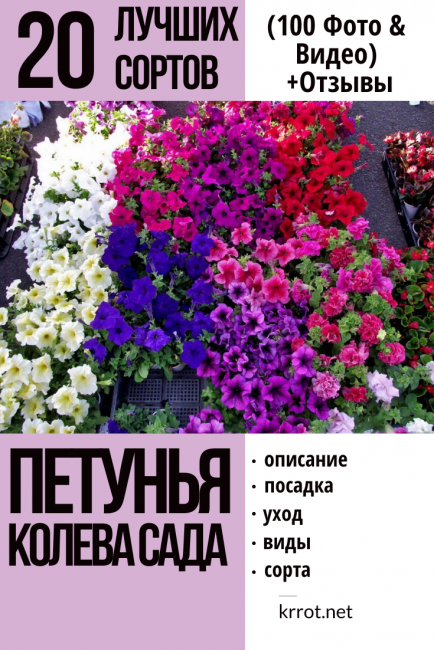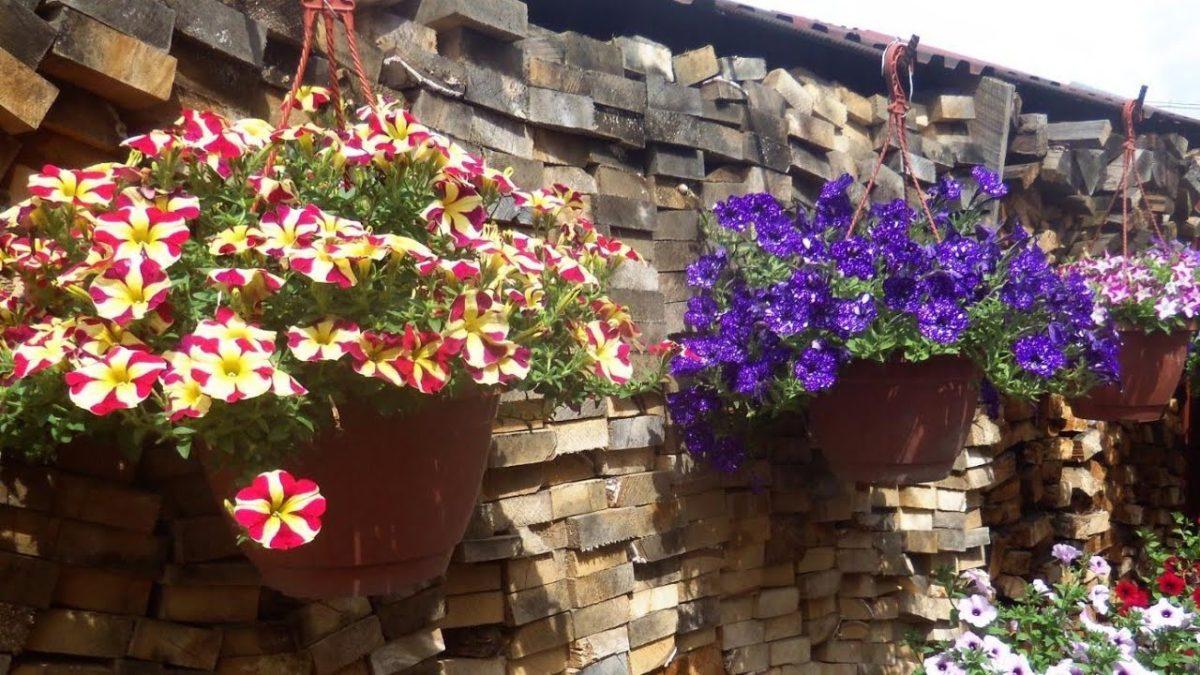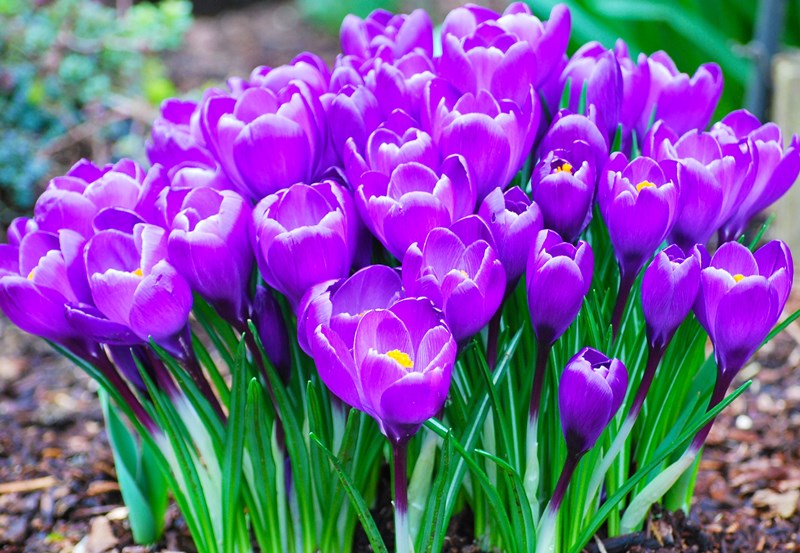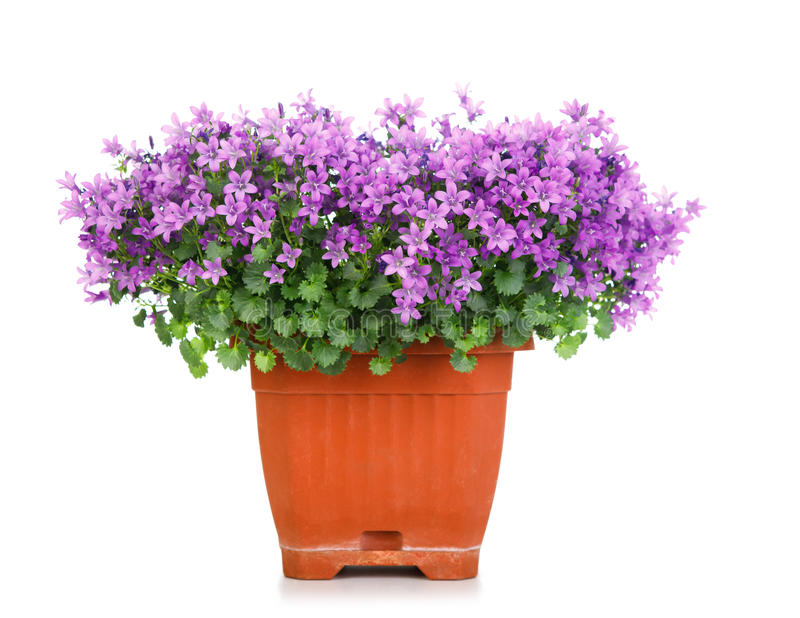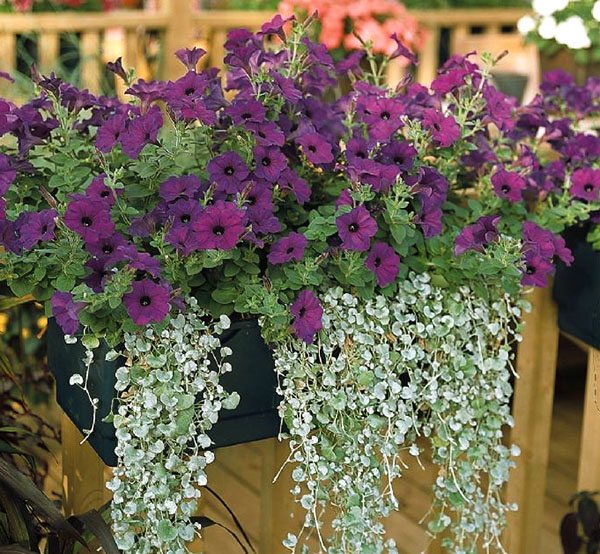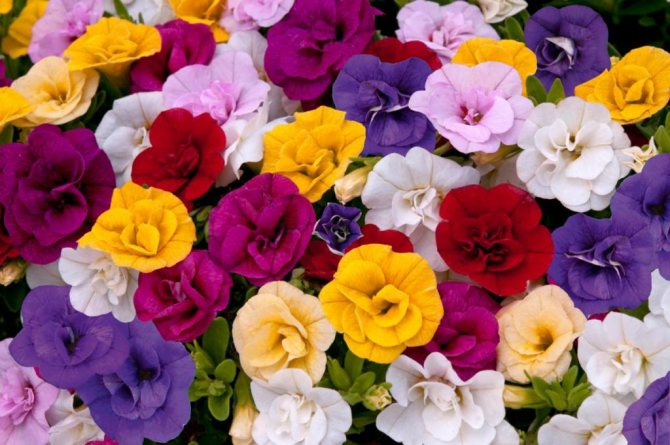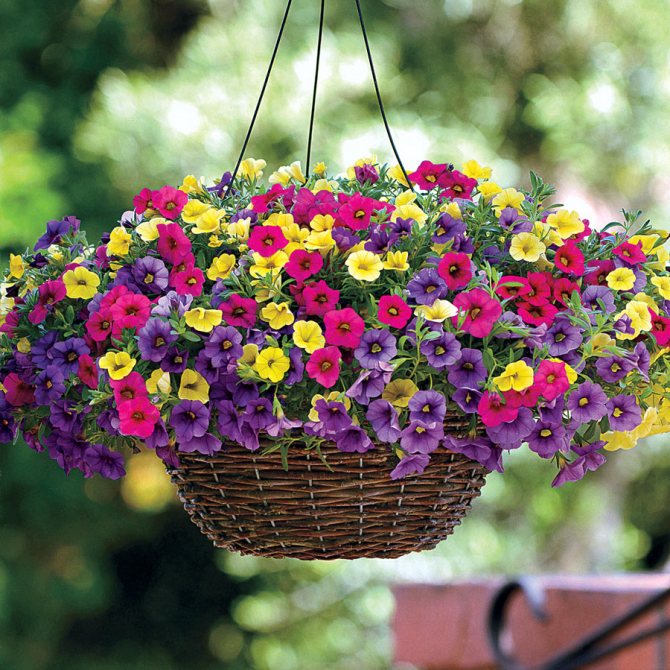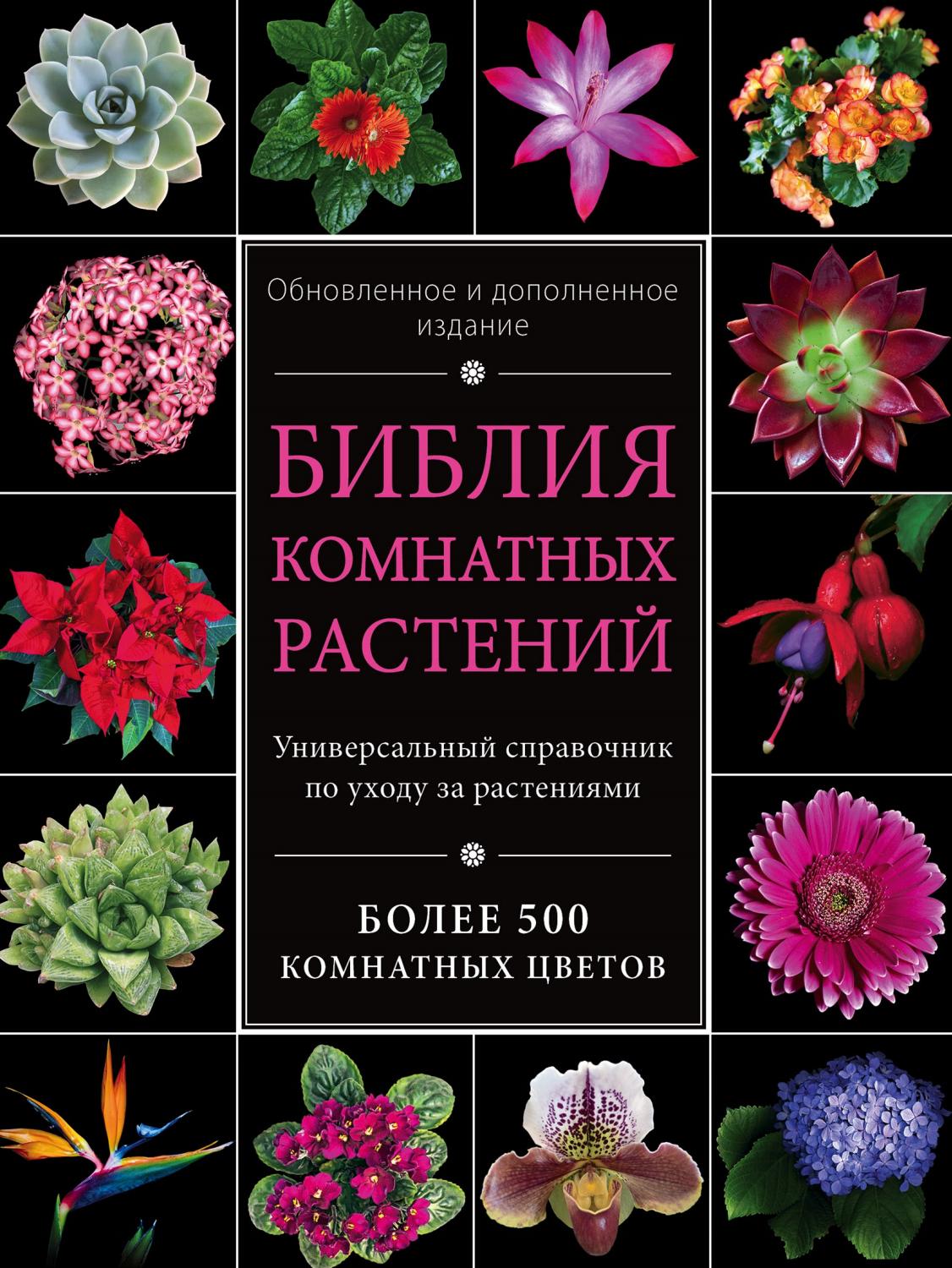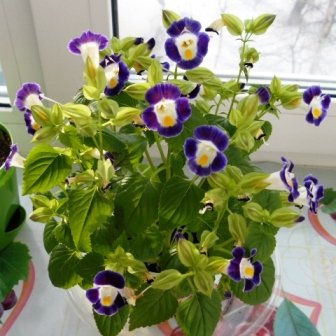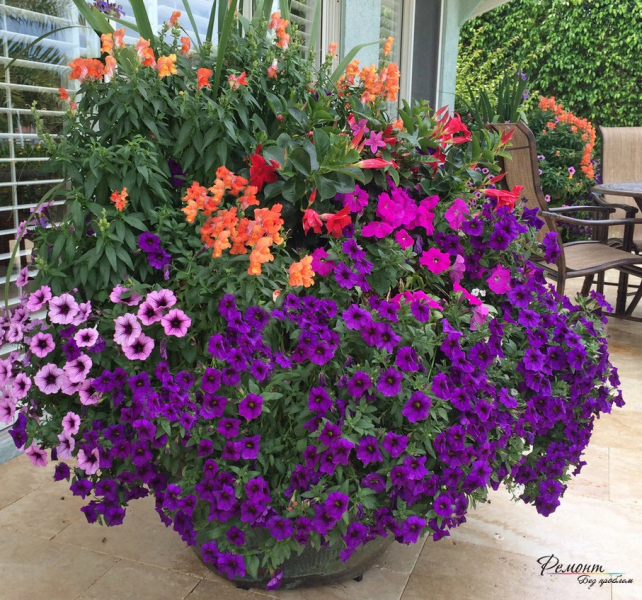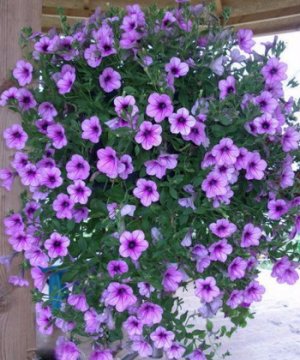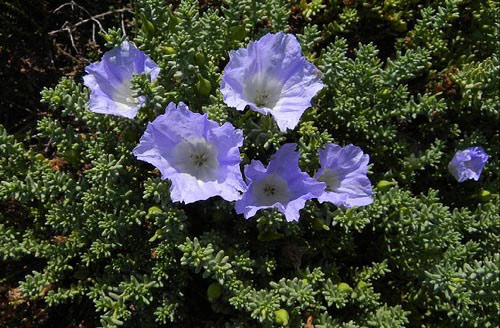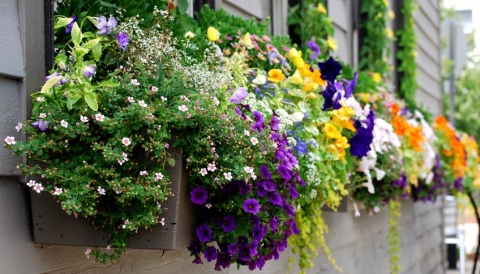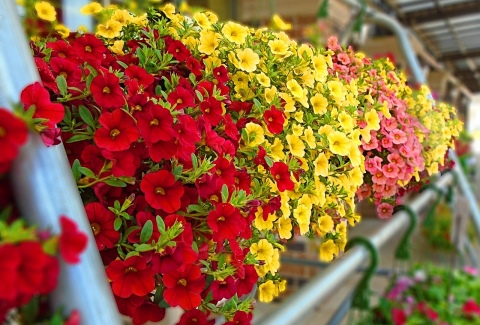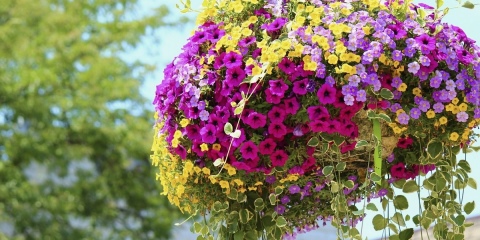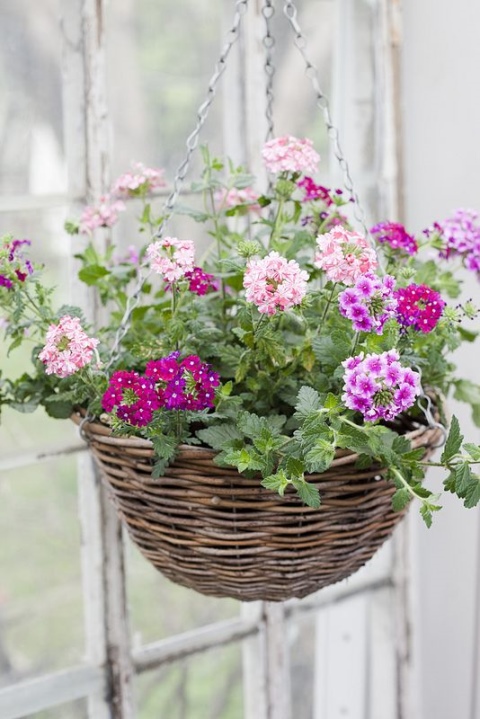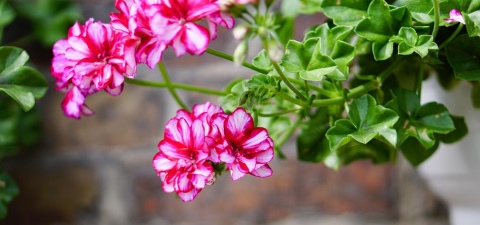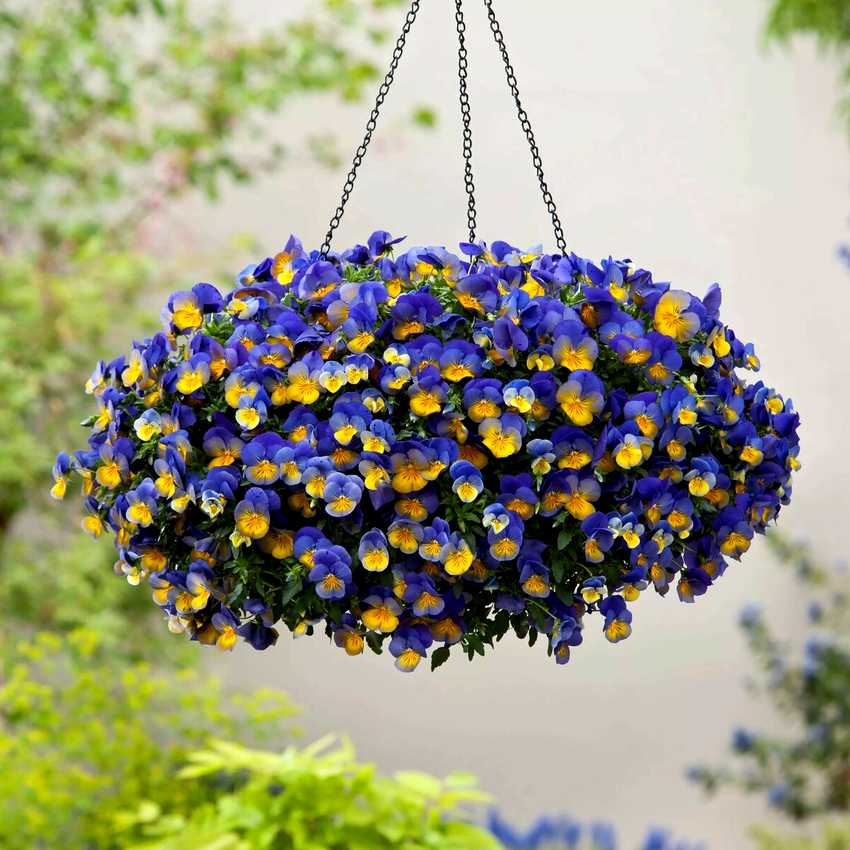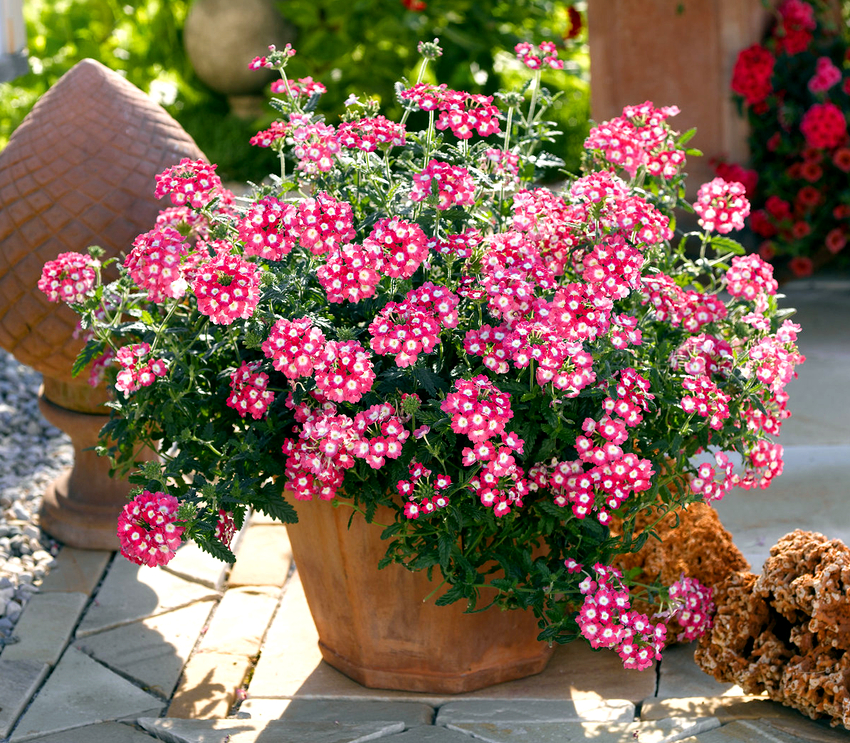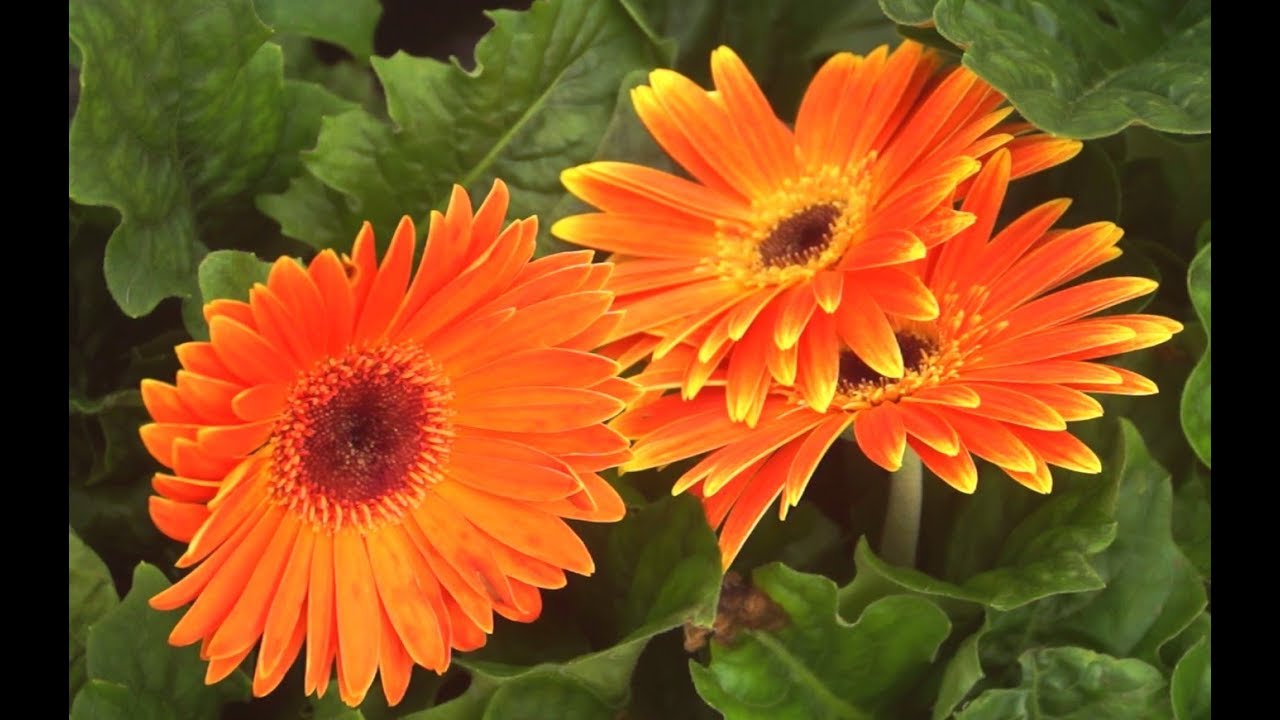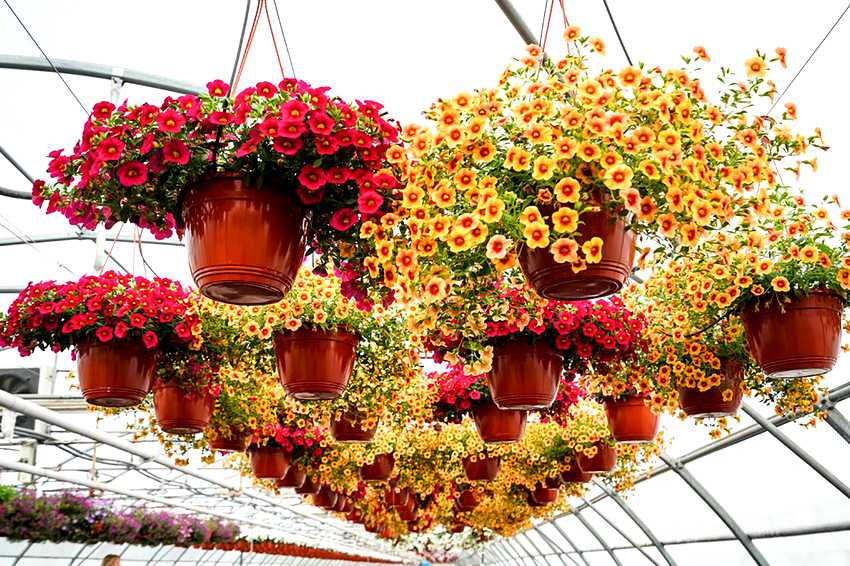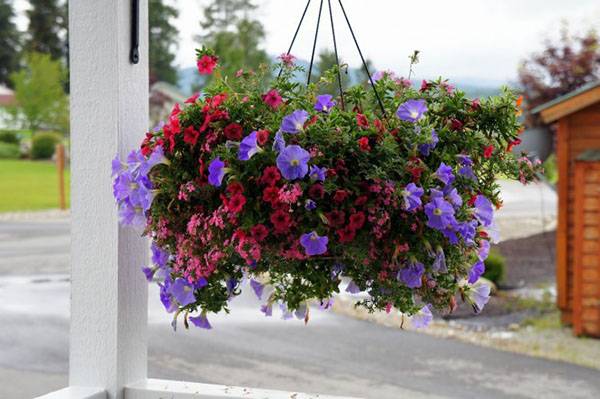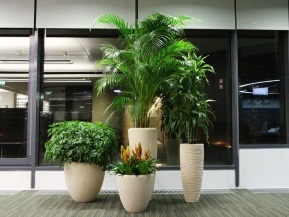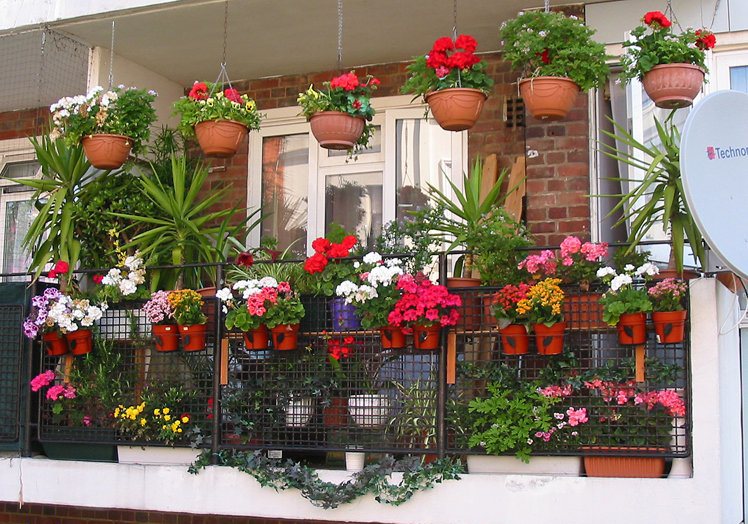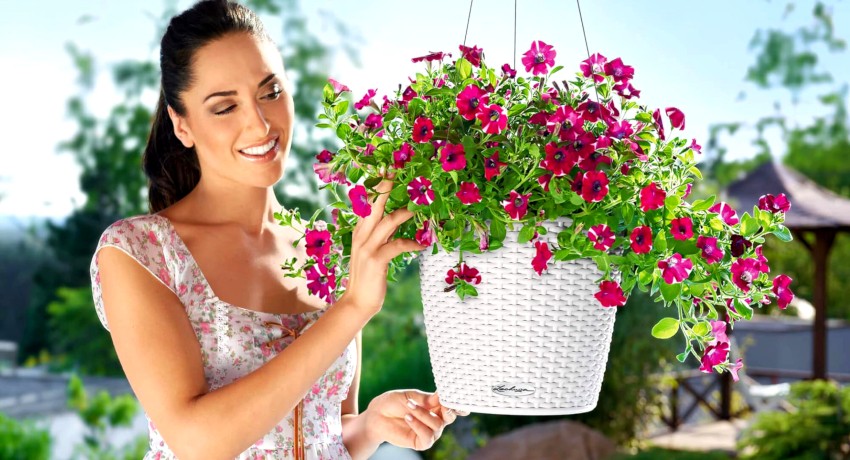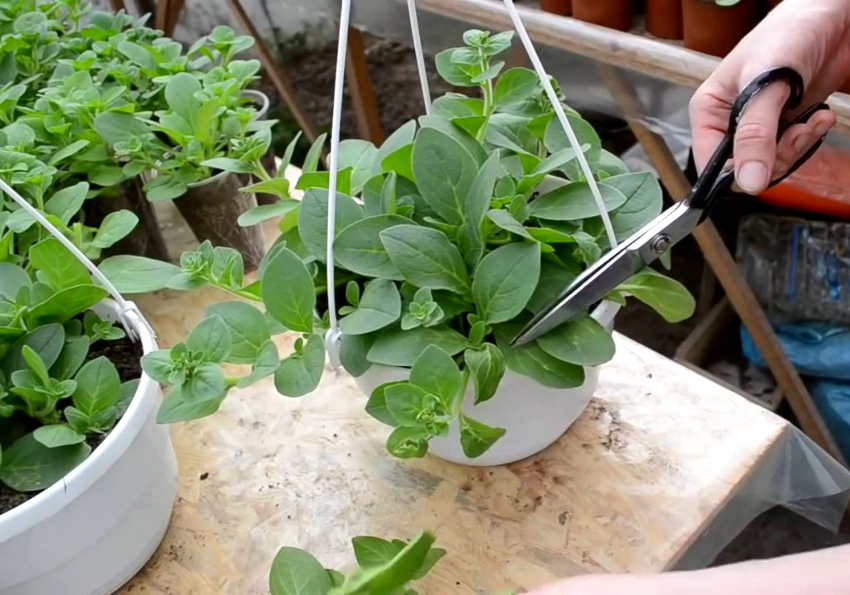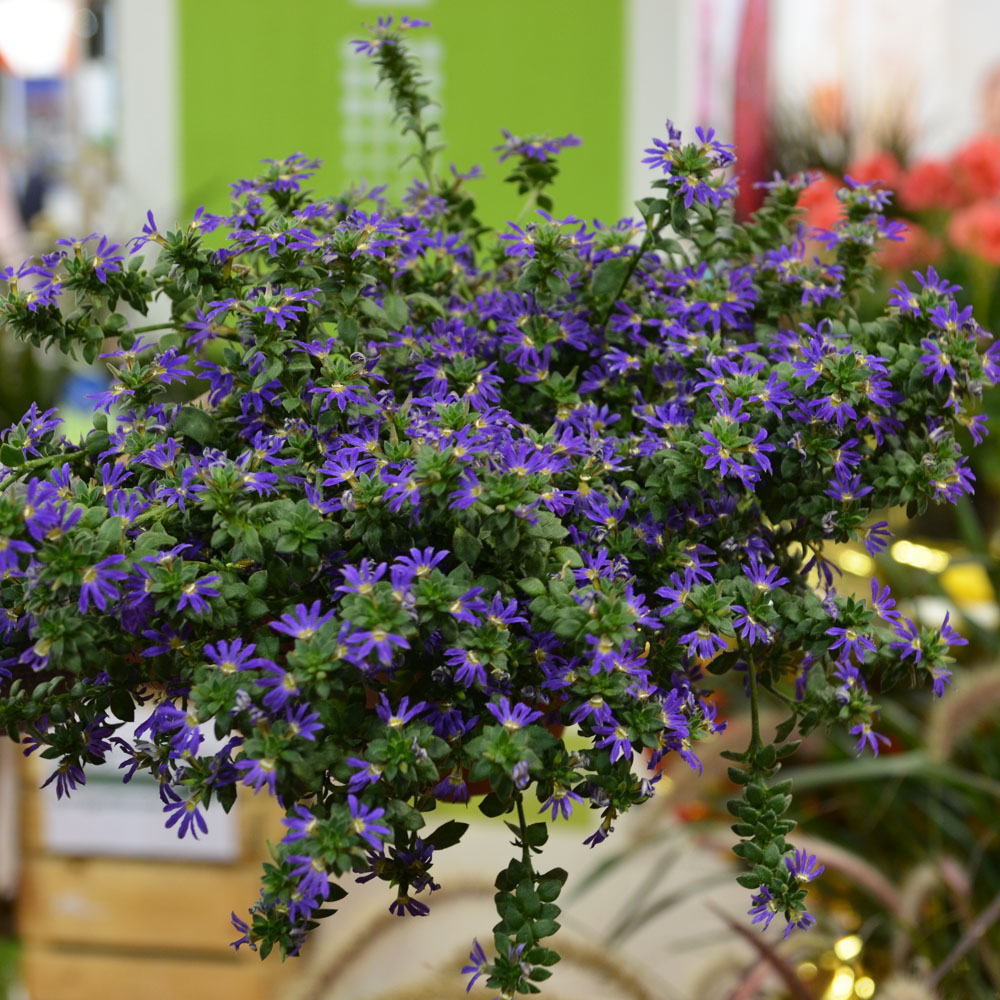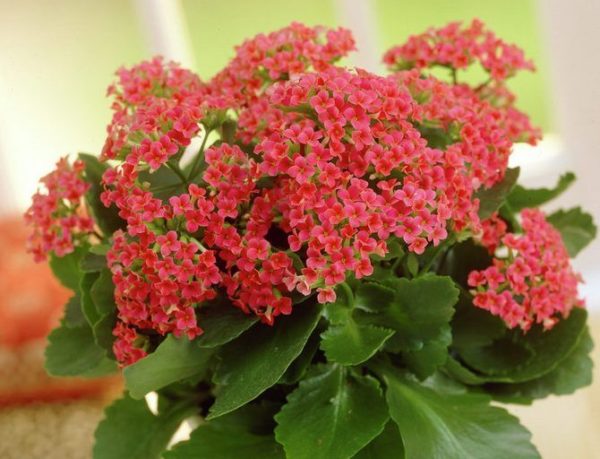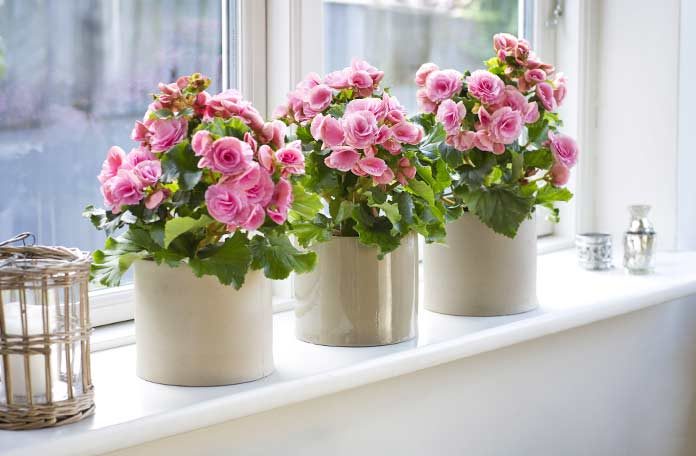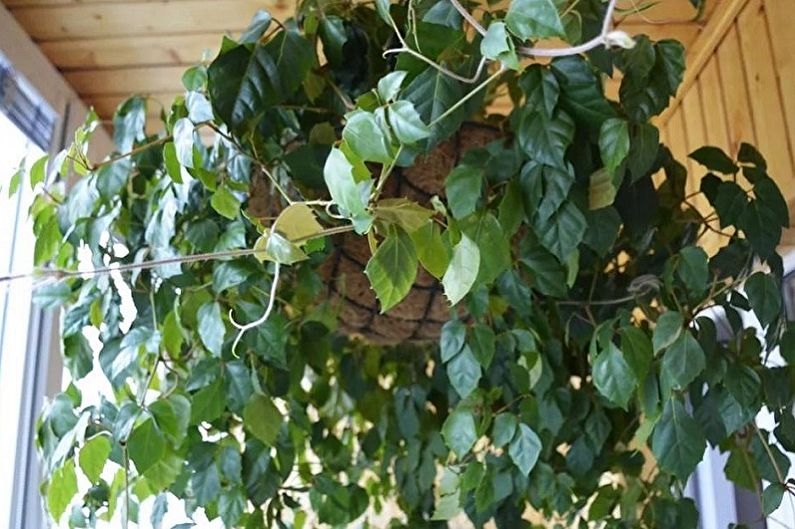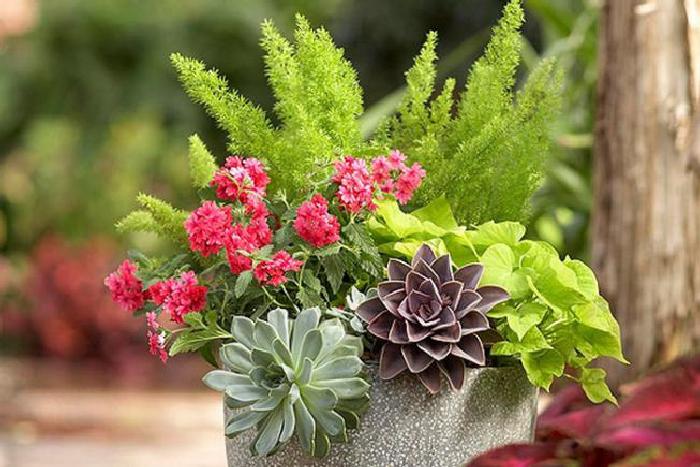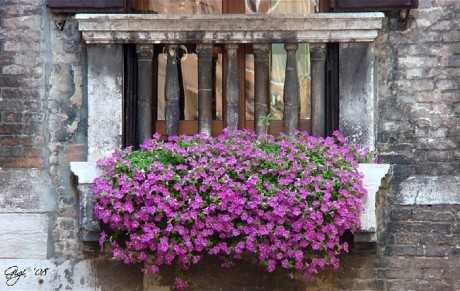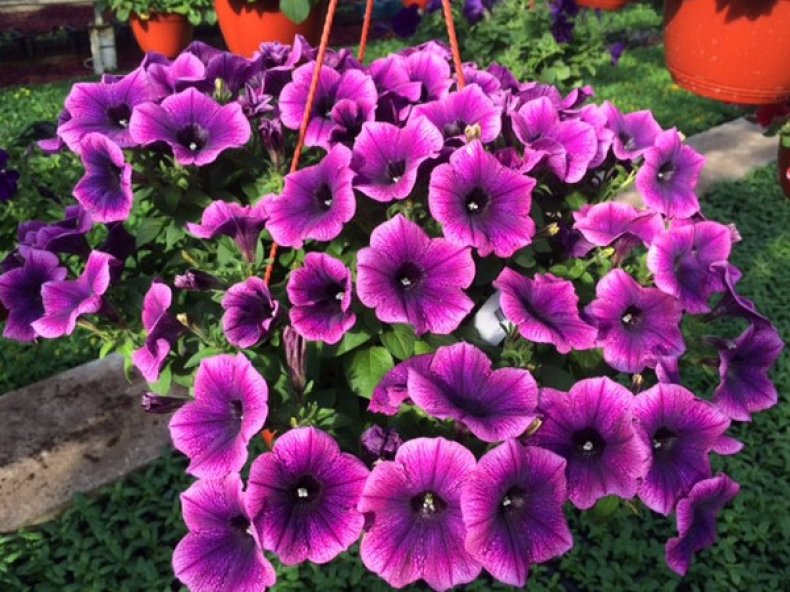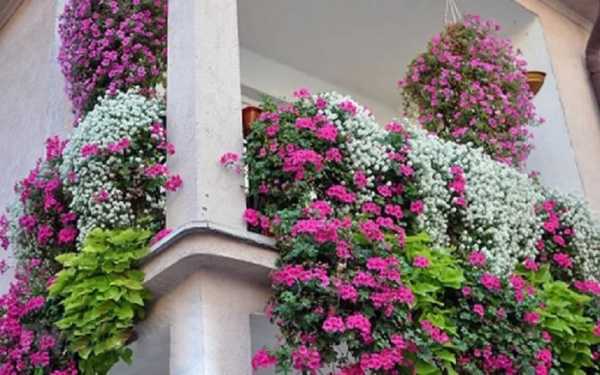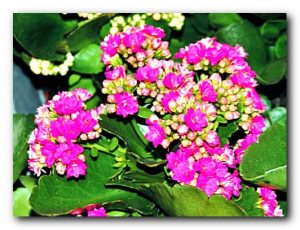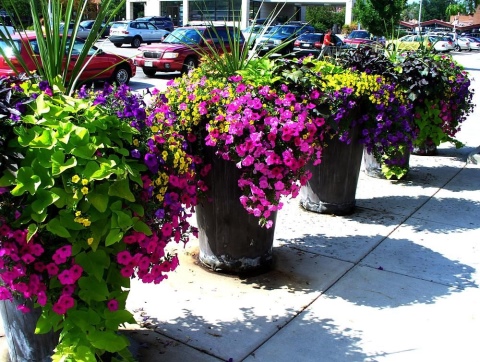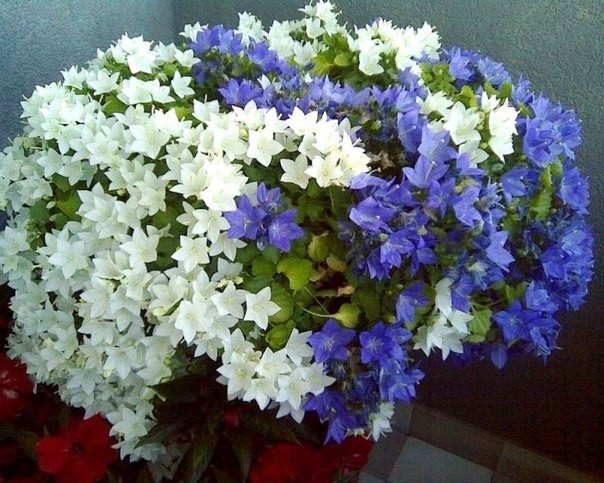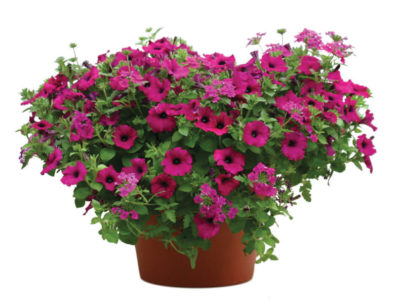What plants are suitable for ampel growing
For ampelous cultivation, colorful, beautifully blooming plants with a large cap or long shoots falling from the pots are ideal.
Among succulents, the most popular are:
- Sedum Morgana, or sedum. Growing is possible at home, in the garden. Fleshy cone-shaped leaves form massive whips. Moisture accumulates inside the shoots, and therefore it tolerates drought well. Such a thrifty flower is suitable for busy people who are away from home for a long time. It blooms with small reddish flowers.
- Rowley's godson. People call it a green pearl for its bead leaves strung on a thread - a thin stem. Florists grow a rose flower both at home and in the open field. Its stems reach up to 2 m. It blooms with white flowers, similar to a dandelion, but the plant is valued for its foliage.
- Disocactus is whip-like. A cactus with dangling spiny stems reaching 1.5 m in length and 2 cm in thickness during five years of cultivation. In spring, it blooms profusely with large pink tubular buds.
Flowering ampelous plants have won the love of gardeners with a variety of colors, abundant flowering and unpretentious care.
- Fuchsia. The ampel variety has thin stems that form a lush crown that cascades down. Unusually shaped buds can have different colors.
- Aimenez. Perennial with a winter dormant period. Leaves are oval, pubescent. The buds are funnel-shaped with five lobes. Abundant and lush bloom in all colors of the rainbow makes the plant a universal favorite.
- Violet, or viola. The flowers are similar to wild pansies, only of a larger size. They are planted both in pots and in open ground.
Examples of decorative leafy ampelous flowers:
- Tradescantia. It is a creeping, creeping shoots with oval leaves densely located on them. The color of the leaves is varied. There are varieties where one side is usually green, the back is burgundy. Also some have white, pink stripes. It blooms with large white-pink flowers.
- Begonia. A flower with asymmetrical leaves and a lush red bloom.
- Chlorophytum crested. The bush has long green leaves 3 cm wide with a white stripe in the middle. Shoots hang from the middle, on which daughter bushes are formed over time, representing as a whole an original cascade.

Tradescantia, thanks to its unusual colors, has not lost its popularity for a long time.
Plants for the balcony
Decorating a balcony or loggia in an apartment with flower pots with flowers is a great idea for realizing a cozy place to relax from the bustle of the city. Plants are brought out to the balcony in May, when the danger of frost has passed and are watered daily.
Important! Balcony boxes must be well fixed or stably placed
What ampelous flowers to choose for pots
Indoor plant species are used for the interior. Before choosing them, you must take into account the location of the balcony:
- South and west sides. They are characterized by good lighting, constant exposure to dry air. Preference is given to verbena, milkweed. All flowering plant species will also fit perfectly, for example, petunia, pelagonia, surfiniya, multiflorous jasmine.
- North side. The shady loggia is suitable for shade-loving decorative deciduous plants such as begonia, balsam, fern.
- East side. A compromise between light and shade, which means that both sun-loving and shade-loving plants are suitable for growing.
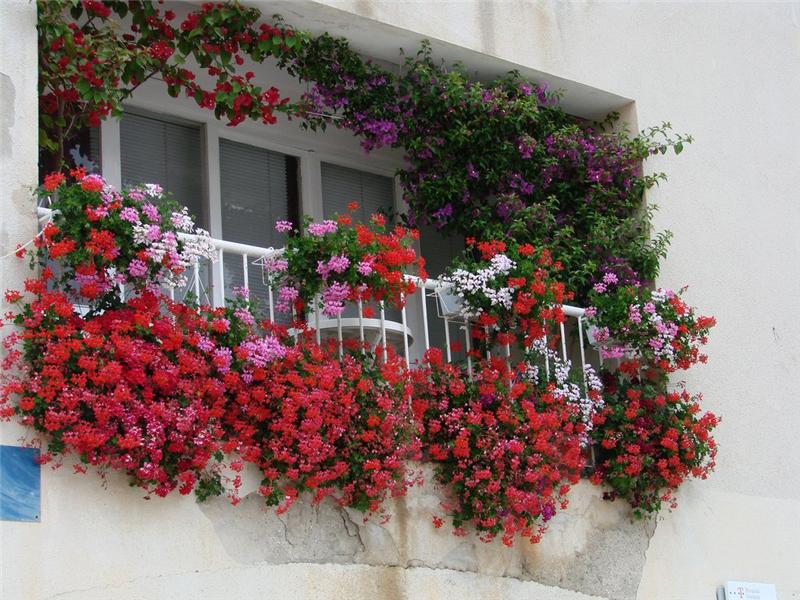
Balcony decoration with ampel flowers
The unnecessarily windy side will be tolerated by pots with begonia, lyubelia, ampelous verbena, which means a certain endurance of these species.
Important! Plants related to succulents cannot be tolerated on the balcony. You should also not plant flowers with opposite preferences in the same box, because
caring for them is quite different.
Plants for hanging planters
Indoor fuchsia, ampelous begonia are taken out of the apartment and hung out in the summer on the balcony, while maintaining the same care for them. In the open air, garden long-flowering annuals also feel good: petunia, verbena, snapdragon, viola, nasturtium, scovola.
The hanging vase is convenient because it can be outweighed from place to place, changing the view of the balcony. For single plantings in hanging pots or flowerpots, Bacopa, Diastia, Biden are suitable.
Ampel flowers are very convenient for growing in the garden or on the balcony. The main thing is to choose the right variety and provide it with the necessary conditions.
vote
Article Rating
What kinds of flowers are there for growing in pots?
In nature, this group of plants is soil-based, and growing at home, they form lush bushes, the shoots of which gently stretch to the ground. The leaves, which are often shiny, give a special appeal to such flowers.
To make the ampelous flowers beautiful, watering should be carried out daily, and on hot days - twice a day.
The main types of hanging ampel flowers for pots:
Chlorophytum. It is a perennial ornamental deciduous plant with narrowish light green leaves. The buds are small. When loose, they have a snow-white shade. This type of plant does not need special care. Chlorophytums are the most unpretentious flowers for growing in pots. They thrive both in the shade and in the sun. Such plants can be planted in any kind of soil. The flower tolerates short-term drought well. Even if the leaves have withered, they recover very quickly after watering.
Begonia (ampelous). A profusely flowering culture, with proper care, which is abundantly covered with colorful flowers. The buds can be up to 8 centimeters in diameter. Depending on the variety, flowers are double, semi-double and simple. They often take on a red and coral hue, but they can also be orange, white, yellow, crimson and burgundy. Begonia blooms from the beginning spring to the end autumn.
Morning glory or bindweed. This is one of the most popular plants. It can be grown both outdoors and indoors. In order for morning glory to please with its flowering for a long time, it must be provided with a lot of light and often watered. The uniqueness of the flower is the shoots that resemble a vine. Deciduous plates are narrow. The flowers are presented in the shape of a funnel, they delight with their unusual appearance for only one day, after which they fade. But this behavior of the plant is little noticeable, since many new buds appear on the shoots every day.
.
Fuchsia (ampelous). An incredibly beautiful plant, the flowers of which can take on a different shade. The buds are medium in size. When loose, they can be double, simple and semi-double. These are the best flowers for planting in pots in the country. They are picky about leaving. In order for the plant to bloom profusely, it is enough to systematically water it and feed it occasionally.
within 50 C.
Bacopa (ampelous). A perennial variety, but gardeners often use it as an annual. Flowers and leaves are small. They can be white, blue, purple and pink. Bacopa blooms throughout the summer. Wintering is best tolerated on a glazed balcony, where the air temperature is in
No less popular hanging flowers for pots on the street are dichondra, calibrachoa, petunia.
The latter type, due to the variety of shades, is often used to create interesting compositions. Petunia gained its popularity thanks to its bright and large flowers.If the plant is properly planted and the minimum maintenance rules are followed, it will decorate the site throughout the summer season.
Bacopa
Very loved by European gardeners, but little known in Russia. Recently, it is rapidly gaining popularity among fans of landscaping loggias and summer pavilions. The plant has about 100 varieties, most of which are aquatic species.
Bacopa ampelous is known to most gardeners as a sutera. Its homeland is considered to be Africa and the tropical part of South America.
These ampelous flowers are distinguished by their attractive appearance. Its drooping shoots are very densely covered with small flowers of pink, white or blue flowers.
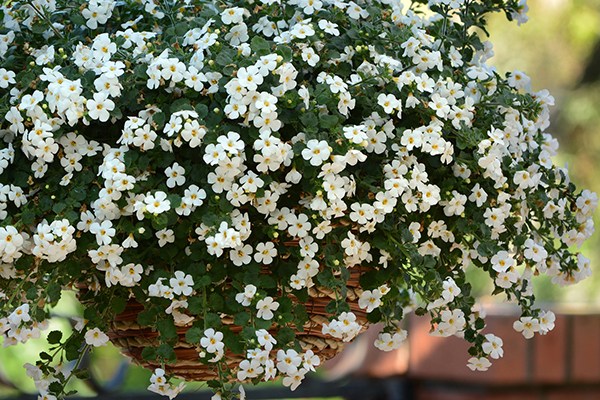
Sutera likes abundant watering and requires frequent hydration. Perhaps this is where all the features of caring for her end. Otherwise, she is completely unpretentious. Bacopa grows equally well both in partial shade and under sunlight, and is not afraid of temperature changes.
It goes well in floral arrangements, but it can compete with any ornamental plant alone.
Interesting solutions
For more interesting decorative compositions in pots, it is recommended to plant not only flowering plants. The combination of ampelous flowers with ampelous succulents or deciduous varieties looks interesting and harmonious.
Succulents are well suited for weekend residents. Accumulating a sufficient amount of moisture in their tissues, they will survive several days without watering without harm to themselves.
Ampel succulents will grow equally well in pots on the veranda and in flowerpots in open spaces. The most popular types of succulents for pots are: Ripsalis, Morgana, Siebold, Aporocactus.
Ornamental leafy ampelous plants include tradescantia, ivy, asparagus, creeping ficus, scindapsus. But the dichondra looks especially unique in the pots. It looks like a silvery-green waterfall, and thousands of small leaves on branched stems create a mesmerizing air cascade.
In the process of creating flower arrangements in hanging flowerpots, you need to remember that all plants must have similar moisture requirements. It is better to select ampels that do not require frequent watering, because the soil dries out in containers faster than in open ground.
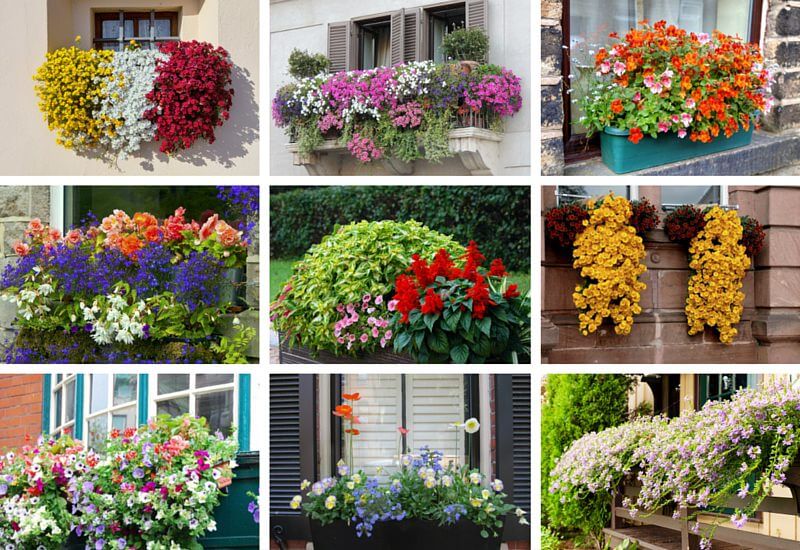
Bouquets with an excellent color palette, height and shape look beautiful. From such combinations, charming living still lifes are obtained. For such pots, they are ideal in combination with each other: petunia, asparagus, tunbergia, tradescantia, ivy, pelargonium, balsam. The main rule is for all plants to hang down, creating a multicolored cascade.
You can plant one type of plants in a container with different colors. The combination of flowers hanging down with shoots with bushy ornamental plants looks wonderful.
If hanging plants are interchanged from time to time, removed and added at will, transferred compositions, then the design of the garden will look different each time. The compositions should be arranged so as not to interfere with the movement of people. If desired, they can be directed upward for further growth along special nets.
How to grow ampelous plants
An easy way is to purchase ready-made flowers in a specialized store. It remains only to choose a pots, place the plants there and arrange them in the right places on the site.
It is much more difficult to grow a crop from seeds, because it is not known what varieties will turn out in the end and whether they will be combined with each other. Therefore, the seeds are planted in separate containers. The hardened plants are transplanted to a permanent place according to their preferences for the composition of the soil and its properties.
Determination of the required soil is possible using the label on the seed package. A universal substrate for ampels is a 1: 1 combination of soil and peat.
Important! If possible vegetative reproduction this type of plant, then you should not neglect it. It is the simplest and most effective
Care rules
Ampel plants grown in pots need frequent watering, unlike those planted in the ground. The smaller the capacity, the more often the flower needs abundant watering. The soil must be equipped with drainage.
Lighting depends on the type of plant: light-loving or preferring to grow in a shaded area.
It is difficult for a plant with stems hanging a decent distance from the pot to withstand the load. You can help the flower with the help of supports in the form of nets, columns, stretched threads, around which the stems will twine
The main requirements for supports are their stability and invisibility, so as not to distract attention from the object being tied.

The plant is supported by a grid
Trimming of ampels is carried out for rejuvenating, sanitary and formative purposes. Slow growing plants cannot be pruned. In fast specimens, dry shoots and wilted flowers are removed. The formation is resorted to in order to give the flower the necessary outlines.
How to compose a composition of ampelous plants
To give the garden brightness and originality, ampelous plants are planted in combination with other species. Flowering species are combined with each other, as well as with decorative deciduous plants. For example, bright petunia looks great with verbena, red geranium with white petunia, fuchsia with lobelia.

Unusual landscape composition
What plants are suitable for ampel growing
For ampelous cultivation, choose colorful plants, beautifully flowering, or having long shoots hanging from the pots. Nasturtium or petunia have this property to some extent. Viola, snapdragon and pelargonium (geranium) are not curly or hanging, but colorful and meet all the requirements of ampel floriculture. Either way, all varieties are very suitable for decorative purposes when grown in hanging baskets. Currently, even small shrubs are used for planting in a hanging vase.
The most popular and well-known plants for ampel breeding are listed in the following list.
- Petunia is distinguished by a variety of colors, long flowering throughout the summer, and ease of care.
- Pelargonium (geranium) is a popular plant. Its conditions are warm and sun, watering is not too abundant, tolerates drought.
- Ampel begonia prefers a sunny location. In such conditions, it is the most beautiful, blooms with red flowers on long stems. Otherwise, it is not very demanding of care.
- Verbena also does not require complex care, blooms for a long time. Grows well in loosened fertile soil, loves the sun.
- Campanula belongs to the bellflower family, has stems more than 20 centimeters hanging. The flowers are white, light blue or slightly purple in color. The plant blooms very abundantly and looks beautiful at the same time. The arrangement of two pots with white and blue flowers is called "the bride and groom". Hang on the window - as close to natural light as possible. But it does not tolerate strong sunlight.
- Ampel fuchsia is a beautifully flowering indoor perennial plant. Graceful white-pink or purple flowers appear in the fall. Prefers moist soil, but not excessively. It is not recommended to expose it to direct sunlight.
- Viola - "pansies" is distinguished by flowers of a pleasant appearance with a rich and varied color, very decorative. There are special ampelous varieties of this plant.
In addition to those listed, in this type of floral design, ampelous flowers for pots are widely used, the names of which are less known.
- Surfinia, which is characterized by various shades of flowers and abundant flowering. Grows rapidly, reproduces vegetatively
- Lubelia with shoots hanging like a waterfall, flowers of various colors: white, blue, pink.Blooms in June if sown on time.
- Bacopa is widespread in America and Europe, but it is not yet popular in our country. Loves warmth, sun, which ensures flowering.
- Dichondra complements other plants by combining with them to form hanging cascades.
The fact that some ampelous plants are not known to everyone does not diminish the importance of such a culture in decoration.
How to compose a composition of ampelous plants
Ampel flowers can be used to grow a magnificent composition and even a real masterpiece of landscape design. Creeping plants will cover the soil with a “carpet” and create a background for the composition. Loosestrife, dichondra and lesser periwinkle are suitable for this purpose. A dense "forest" can be grown from succulents.
Larger multi-rosettes should be placed in the center of the composition. Figures are grown from them: a heart, a star, an animal's face, etc. You can choose one of the brightest flower and make it the center.
Creeping plants must be grown at a certain height: they must rise above the rest of the composition. High-legged flowerpots can be placed in the center or on the sides. Hanging pots will decorate the walls. Climbing and climbing plants are ideal for decorating arches, walls, roofs and other vertical surfaces. They can even braid outbuildings.
The composition can be supplemented with foreign objects, for example, old baskets, boots and any other unnecessary things. You need to show imagination: experiment with shapes, combine different shades, add unexpected details, arrange pots on different tiers.
Additional Information! Arches and walls can be decorated with climbing roses. But these flowers are very whimsical.
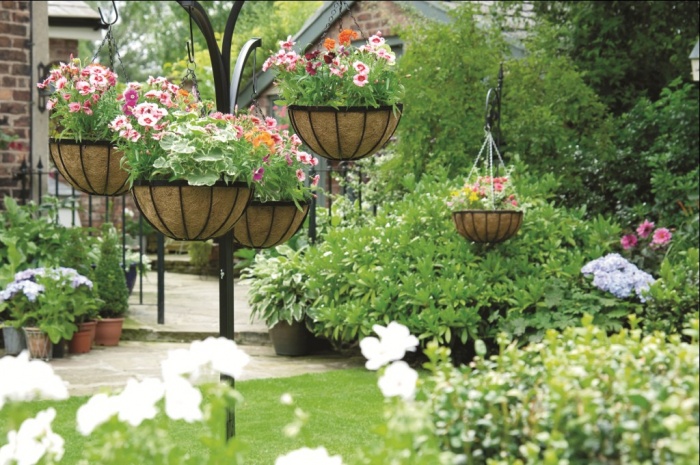
Hanging pots and flowerpots
Hanging garden placement: garden design style and color concept
Hanging gardens are an original decoration of a summer cottage. You need to take care of them in the same way as for a regular flower bed, depending on the needs of the plants. A hanging garden is a floral ensemble consisting of 5 or more plants of different species growing in hanging boxes. To create a hanging garden, you will need many trellises and beams at different heights. All flowers in the composition should receive the same amount of light, moisture and fertilizer. Do not plant light-loving and shade-tolerant flowers next to each other, as well as annuals with perennials.

Hanging garden
Ampelny plants for summer cottages will add a touch of luxury to even the most ordinary-looking area. The suspended composition looks like a light cloud hovering over the garden. It is necessary to care for ampelous flowers as carefully as for ordinary ones.
vote
Article Rating
Ampel nasturtium
Nasturtium is distinguished by its decorative originality, having flowers of an original form with coloring in red and yellow shades. Blossoming is pleasantly complemented by leaves contrasting in color. Nasturtium does not grow in a room and is an annual garden plant
Many flower growers have paid attention to its diversity, willingly cultivate it. Depending on the variety, nasturtium is more or less climbing, often curls, or vice versa, looks like a herbaceous bush.
Although this flower requires a fair amount of sun, it can also live in partial shade. Often grown in garden vases, it also looks elegant in hanging vases. Ampelous nasturtium gives rather long shoots, more than a meter. A beautiful look is obtained from the combination of red, orange and yellow flowers. But there are also terry varieties. The plant is easy to sow and get seedlings, but this should be done in May, when frosts are excluded. This culture is unpretentious to the soil.
Benefits of Hanging Annual Flower Gardens
One of the main advantages of hanging gardens is their durability. Most species of ampelous plants bloom by late autumn. Some of them can overwinter in a warm room and bloom again in the spring. They can be propagated in a variety of ways.
Ampel plants save garden space. They can be placed in a small yard, make stylish compositions, combined with small pools or ponds. If there is no yard at all, then ampelous plants in pots can be an excellent decoration for a terrace, gazebo, balcony or window sill.

A planter with bright colors looks beautiful from any angle
Any flowers decorate and enliven the place where they are. Ampel flowers in pots make it possible to create original, unique compositions, capable of pleasing the eye throughout the summer and even in winter.
vote
Article Rating

